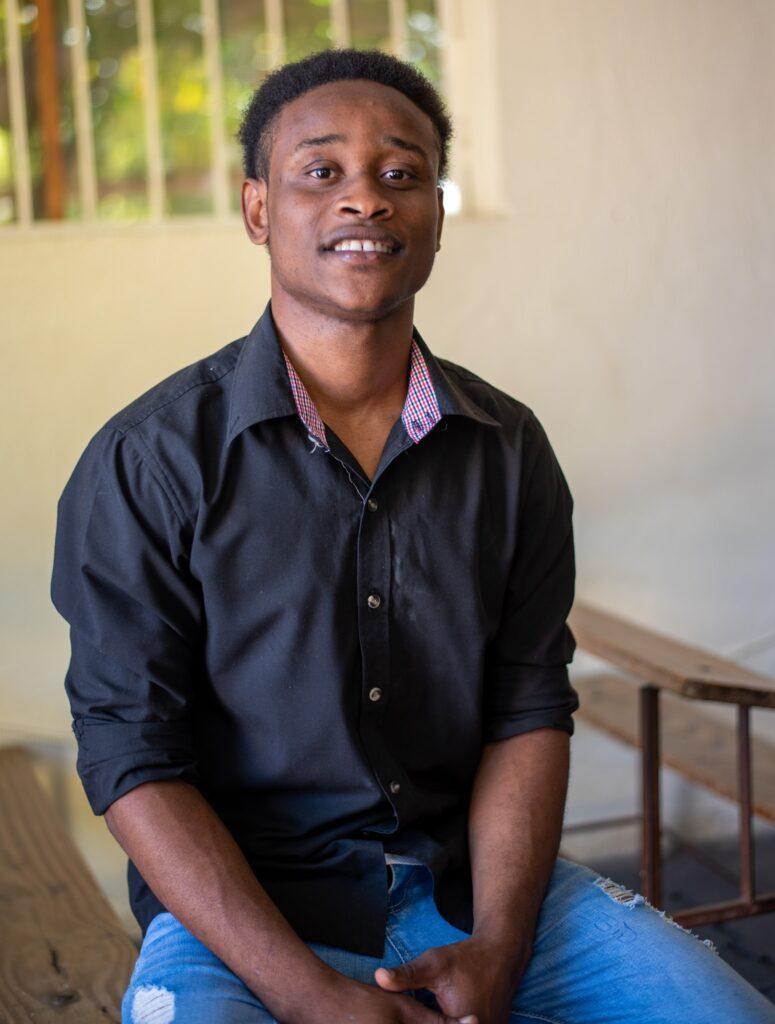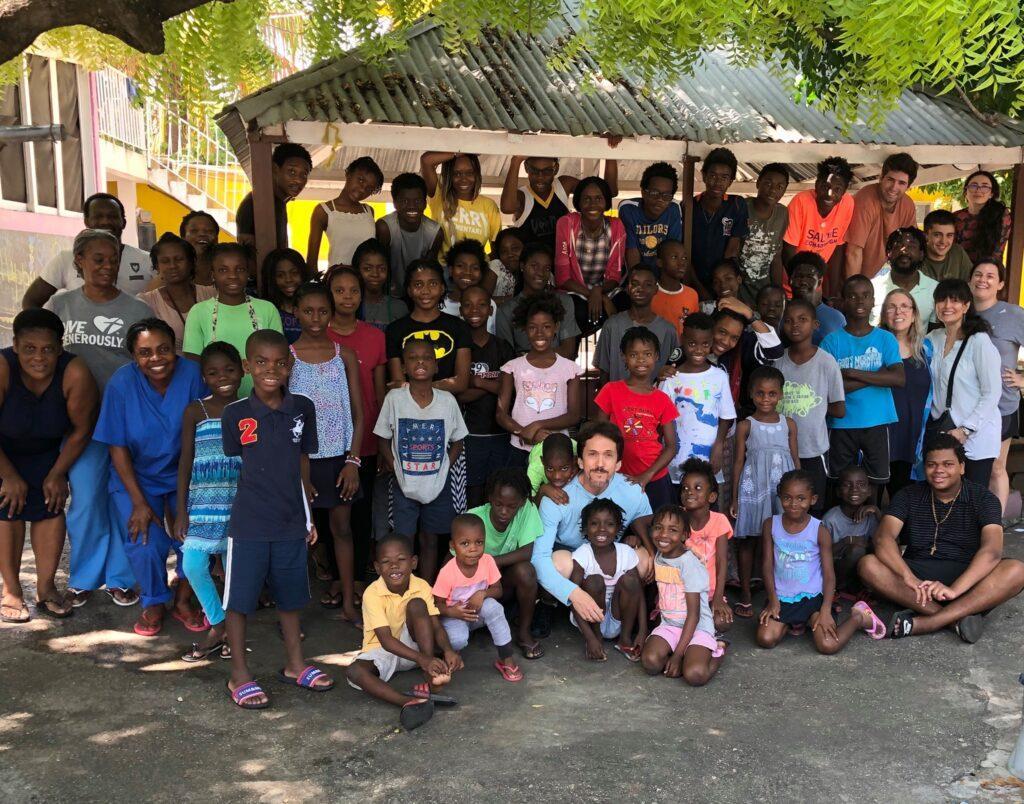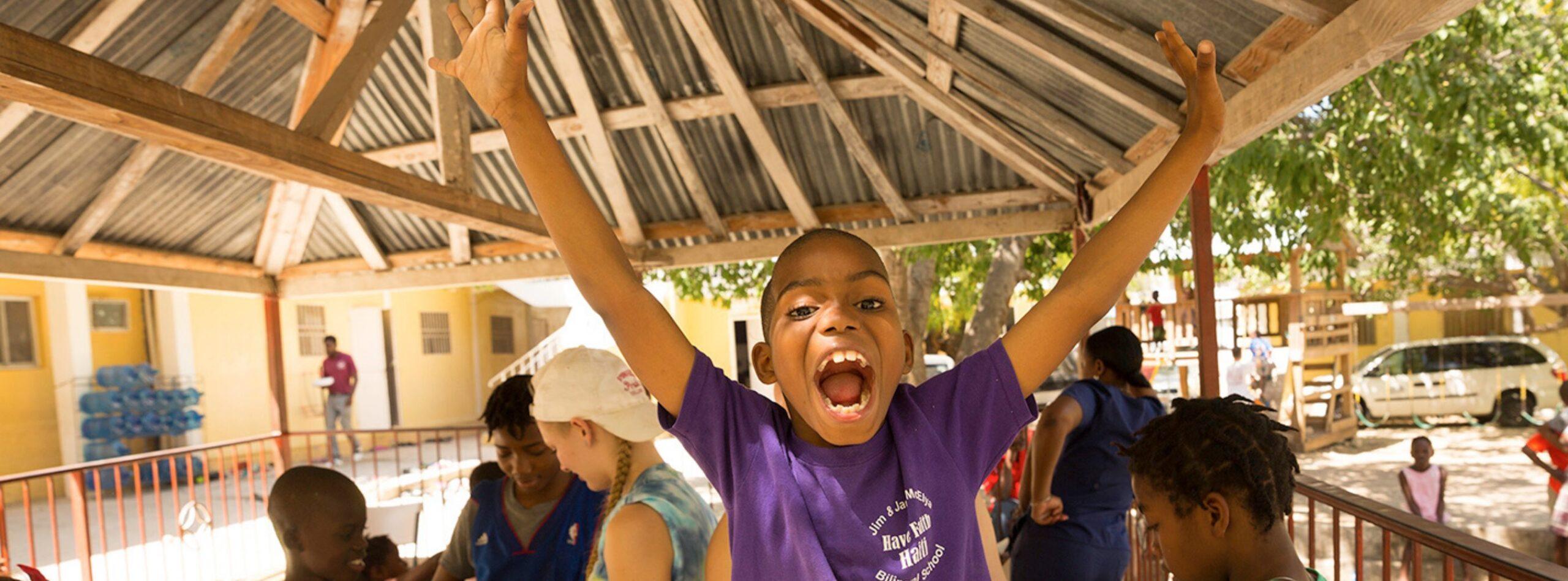PORT-AU-PRINCE — The rain is relentless, pounding our tin roofs like invaders trying to bang their way through. Out in the courtyard, the downpour drums the rocky pavement, so hard the drops seem to bounce two feet upon impact.
Forty-three children run and squeal and scramble through the soaking storm until they are under the protection of a metal gazebo. They wipe the rain from their night clothes. Two hanging lightbulbs provide illumination against the evening storm.
“All right, bow our heads,” says Kiki. At 19, thin, muscular and with a perpetually calm look on his face, Kiki is the oldest kid at our orphanage. Not long ago, we celebrated his birthday. Later that night, he told me, “Everyone is happy for me today. But I don’t feel happy.”
“Why not?” I asked.
“Because I am 19. I should not still be in an orphanage.”
“Your time is coming,” I reminded him. “You’ll go to college next year, remember?”
He nodded and tried to smile.

“Bow your heads,” he says now.
The children follow his lead. So do the nannies, the nurse, the cook, the teachers, the directors and the volunteers, all facing one another in the gazebo’s tight square. Some older kids sit with a smaller one in their lap, like 3-year-old Jerry, who is in flannel pajamas despite the steamy heat, or little Anne, age 4, who is already nodding off in the arms of a big sister.
“Let us pray,” Kiki says. He begins to sing. “I give myself away…” The others join in, a mix of young squeaky voices and adolescent bellows. A few kids bang on bongo drums and the song takes flight. It’s called “devotion.” This is how we end each long, tiring but uplifting day at the Have Faith Haiti Orphanage, a place I have been operating for 11 ½ years in a dicey neighborhood of the capital city of Port-au-Prince.
Haiti is a poor country the way the Sahara is a hot desert. Year after year, it ranks amongst the most impoverished places in the world. Jobs are scarce. Food and clean water are a daily challenge. Education, which must be paid for, even publicly, is a luxury. According to the Human Capital Index, a child born today in Haiti will grow up to be only 45% as productive as they could be if he or she had enjoyed full health and schooling someplace else.
A half-life, essentially.
We are here to try and change that…
And the power goes out.
We are in total darkness. It happens every night. The kids don’t miss a beat.
“I give myself away,” they keep singing, “so You can use me.”
Their voices grow louder as they finish, and for a moment, those voices drown out the rain.
A big, sprawling, wildly different family.
I am here, at the orphanage, as I am every month since 2010, when I took over operating it after the terrible earthquake of January 12th. That earthquake killed nearly 3 percent of Haiti’s population and left nearly 10 percent homeless. It created a steady stream of children whose parents had died, grown too sick to care for them, or abandoned them altogether out of health or poverty, sometimes leaving babies out in the woods, or dropping them at clinics and never returning.
I began admitting a few children that first year, and then a few more and then a few more. Over time, we have taken in more than 60 kids. We have 43 on site right now. They range in age from 3 years old to 19 years old. None of them are ever adopted out. We are called an orphanage because that is how we are classified by the agency that oversees us.
But in my mind, we are a home. And a family.
A big, sprawling, wildly different family.

I want to share the cacophony, the wild curiosity, the unmitigated joy and often heartbreaking life lessons that bloom every day in this boxed-in, third-of-an-acre facility.
I have never written regularly about this place. I’ve done some feature pieces. I wrote a book about one special child named Chika, who briefly became a daughter to my wife and me as we searched the world trying to find a cure for her brain tumor.
But I’ve never chronicled what goes on day to day in this most remarkable place, where, surrounded by abject poverty and sometime in the echo of gunshots, real childhood takes place – true, unfettered childhood, with no TV, no Internet, no cellphones, no screens (heck, we barely have a mirror!)
I am going to write about it now, every week because I want to share the stories of these incredible children who have overcome so much already. Because I want to share the cacophony, the wild curiosity, the unmitigated joy and often heartbreaking life lessons that bloom every day in this boxed-in, third-of-an-acre facility.
And because, approaching a dozen years here, as I look around at the small lakes of rainwater that have collected in our potholes, and the leaky tin roofs, and the fading yellow paint, and our kids, many of them shoeless, stomping in the mud, a thought is turning into a decision.
Maybe it’s time to move.



 Join a community of monthly donors
Join a community of monthly donors
0 Comments